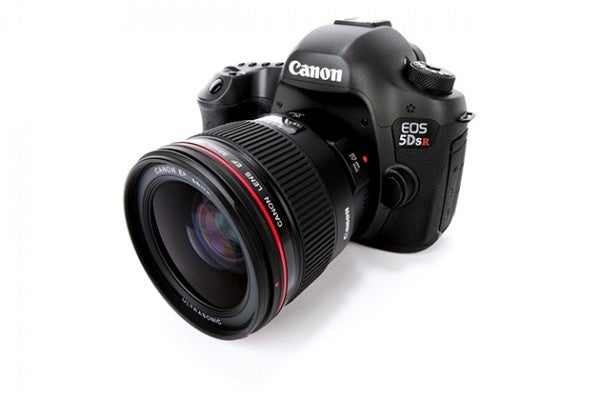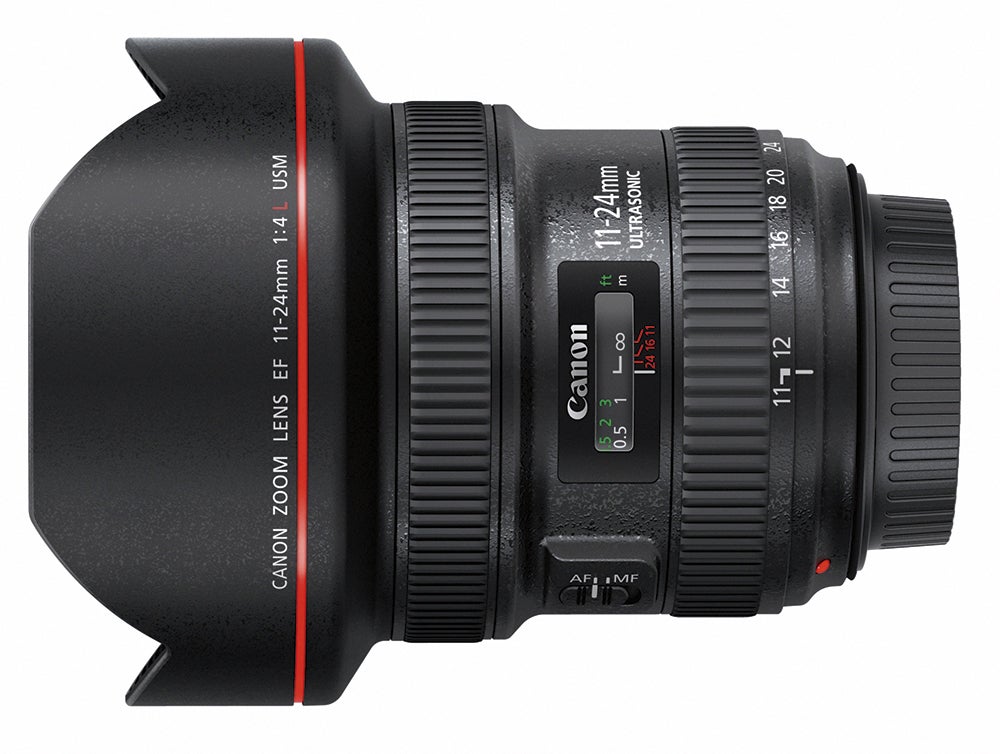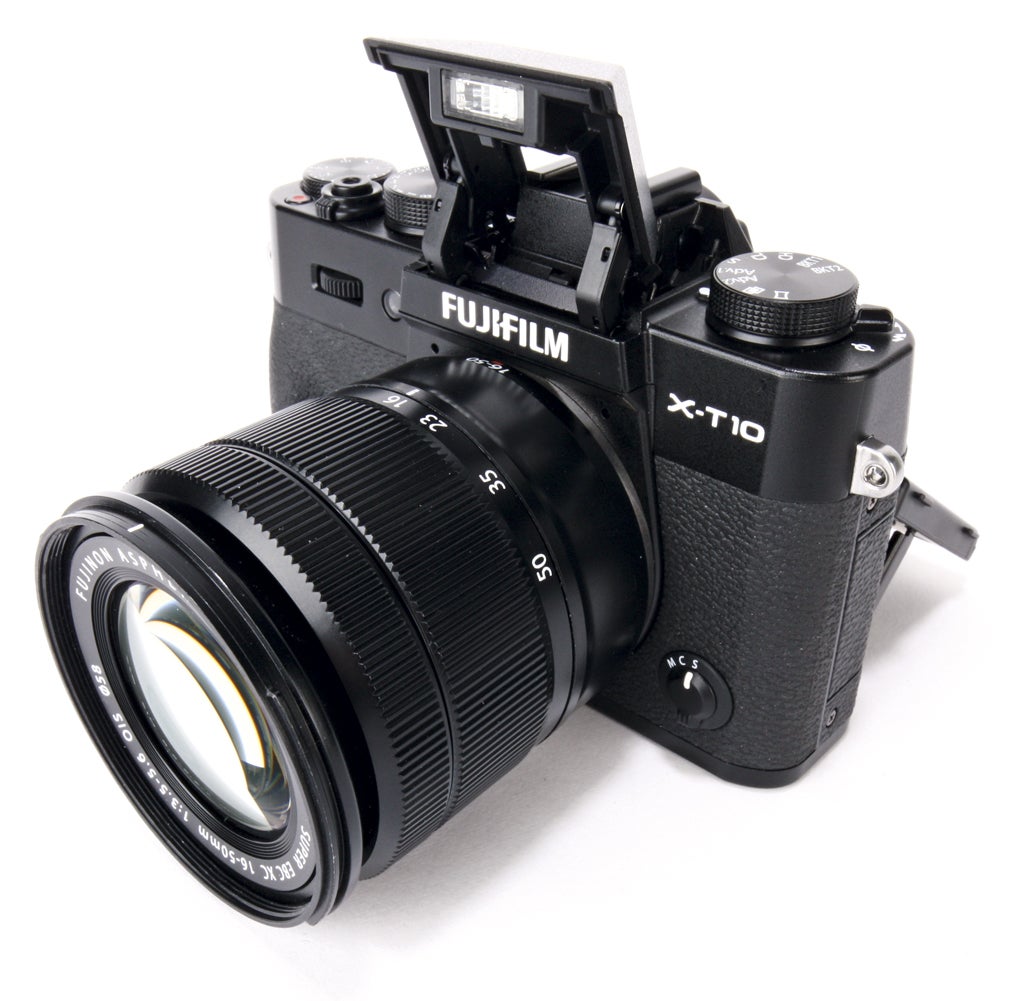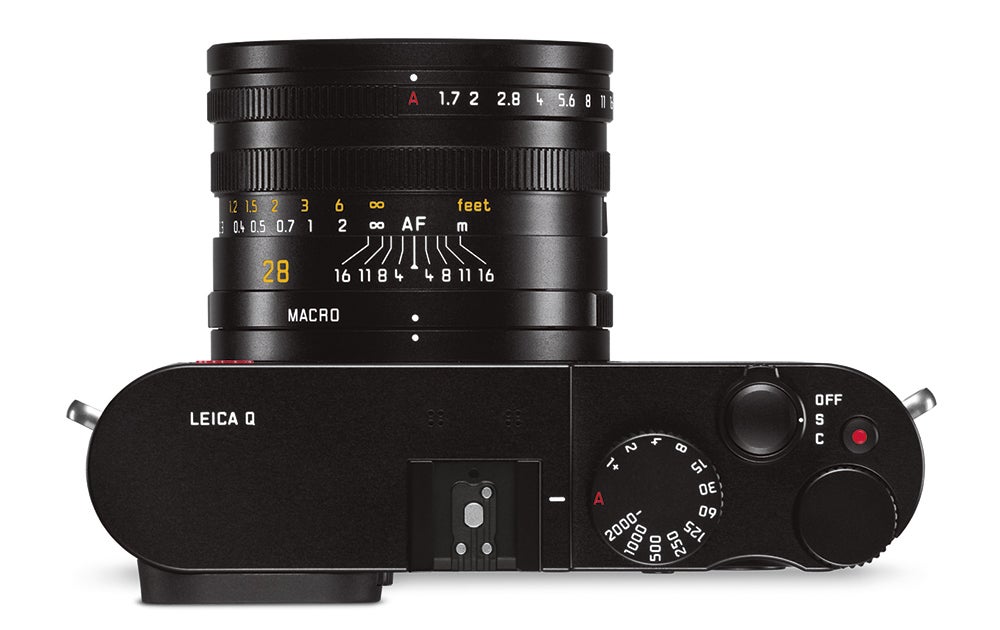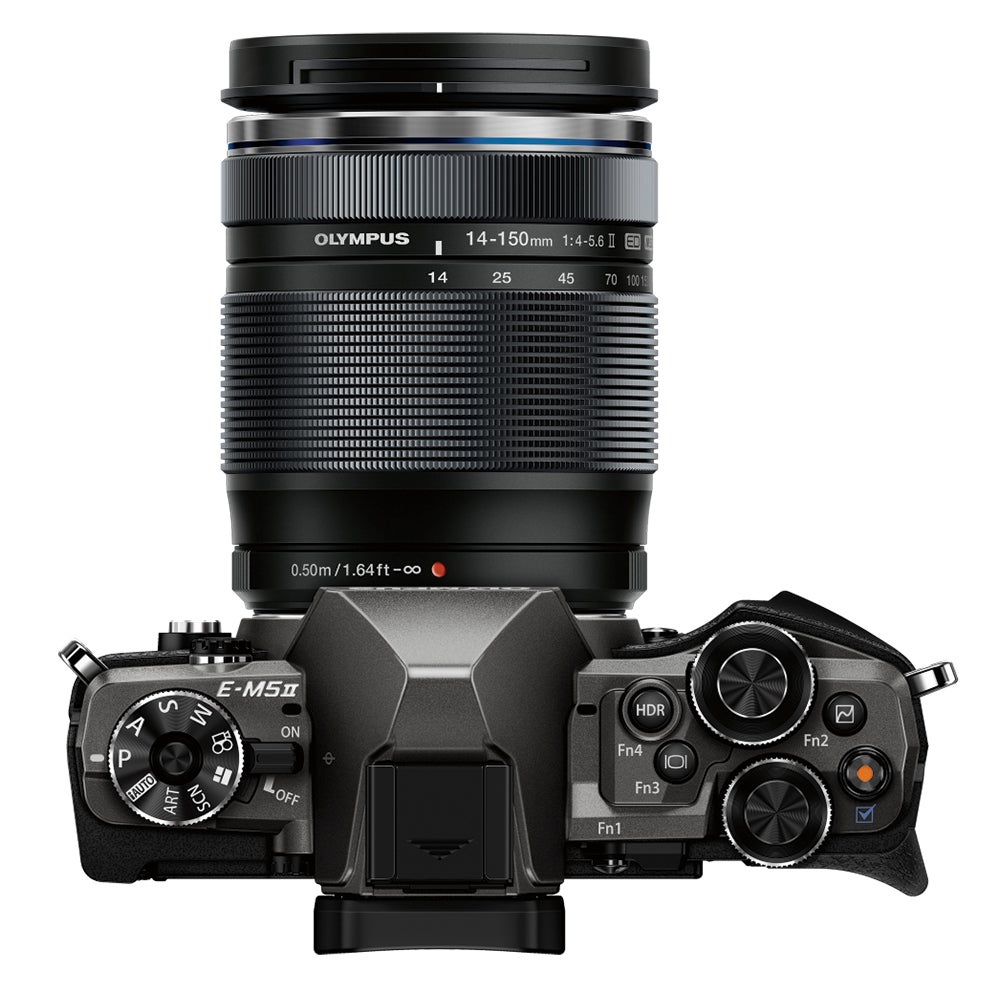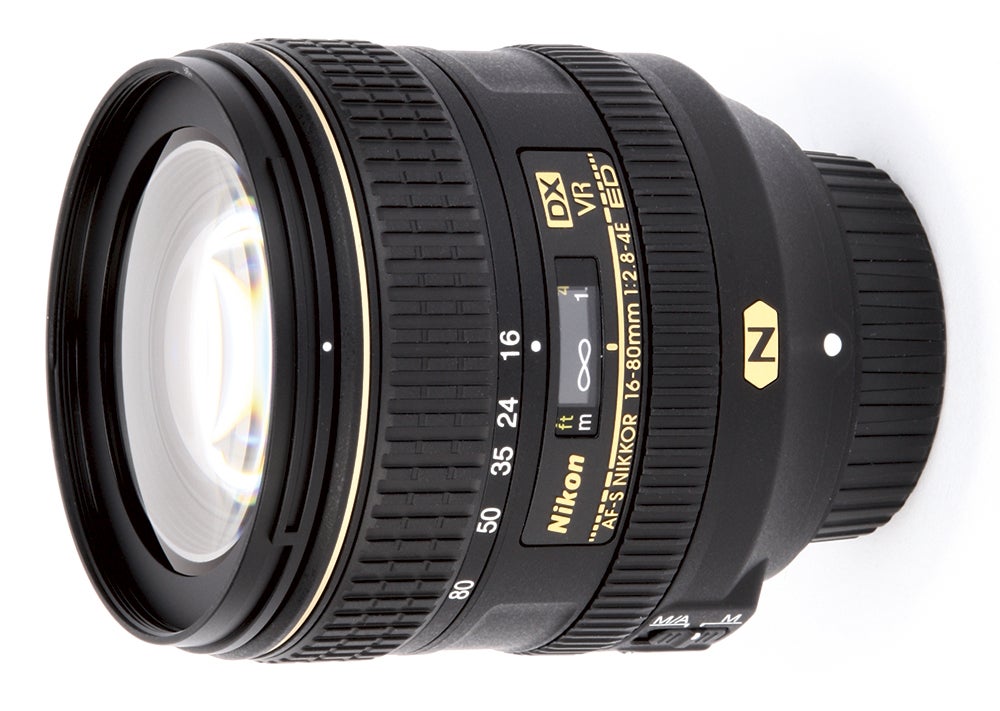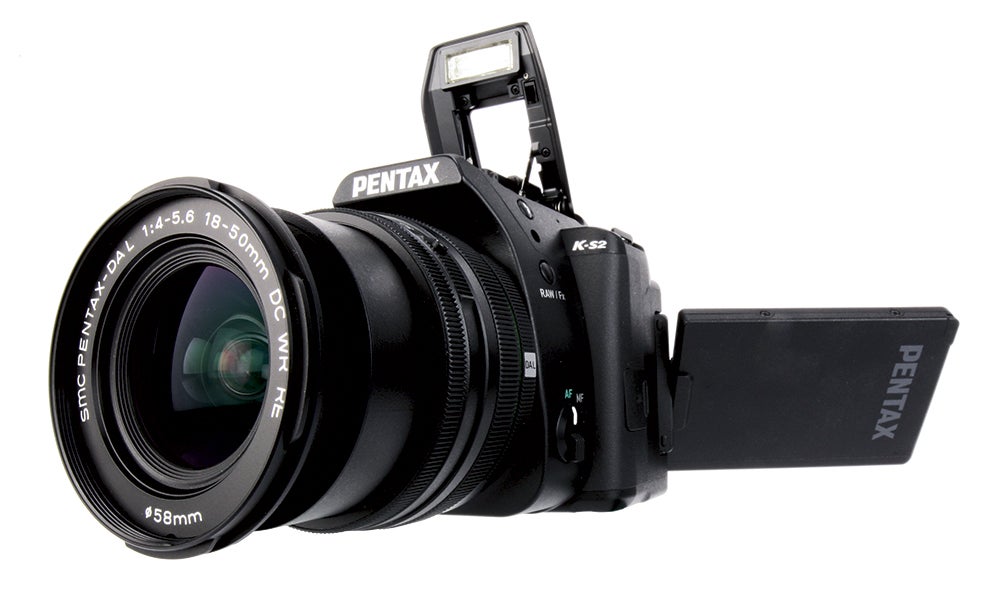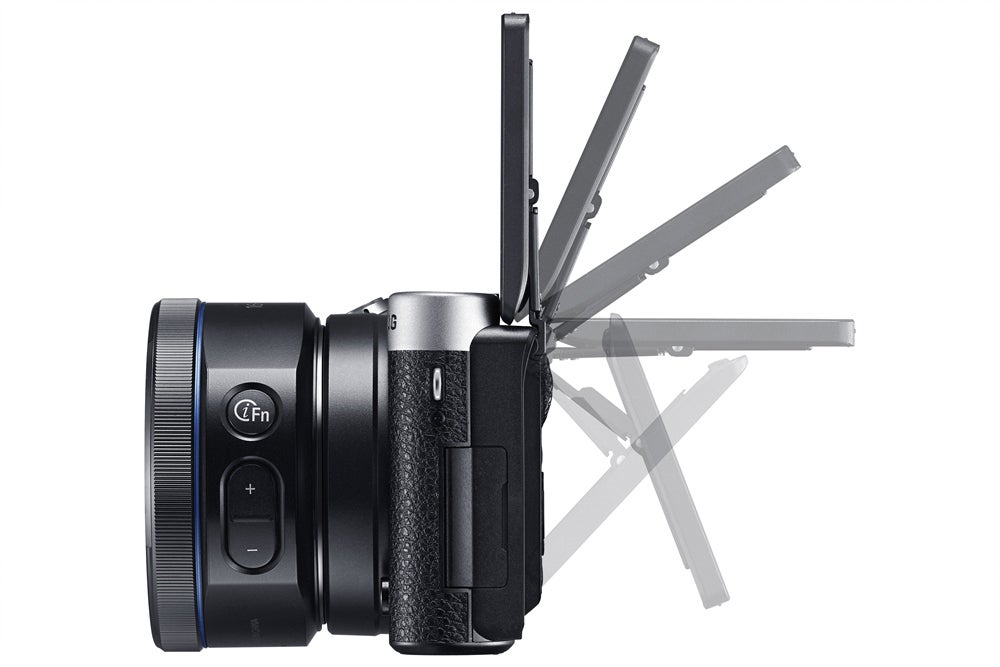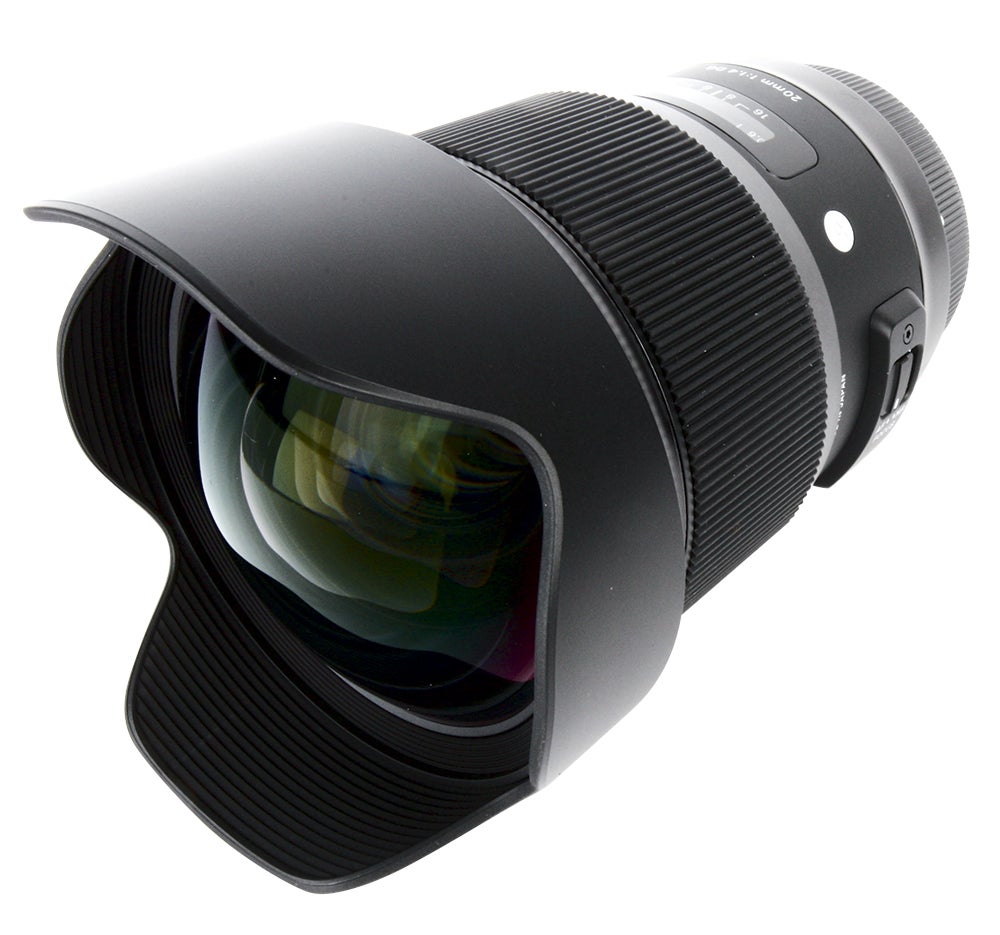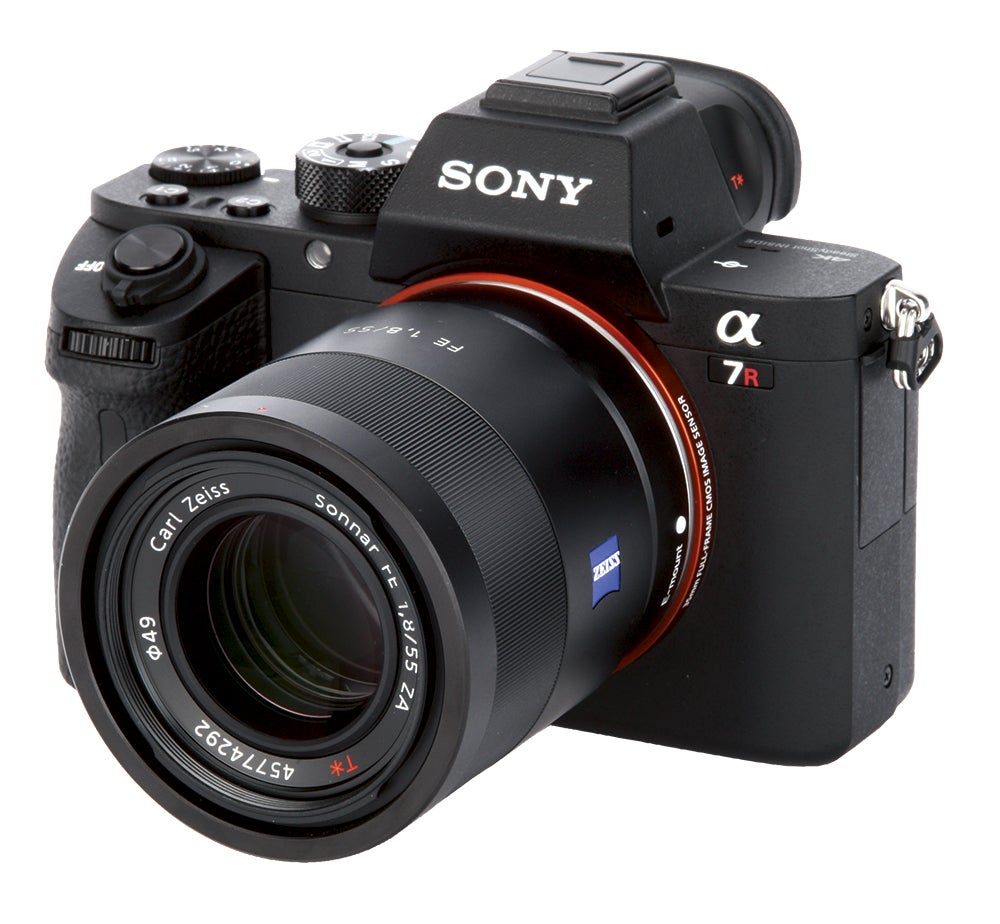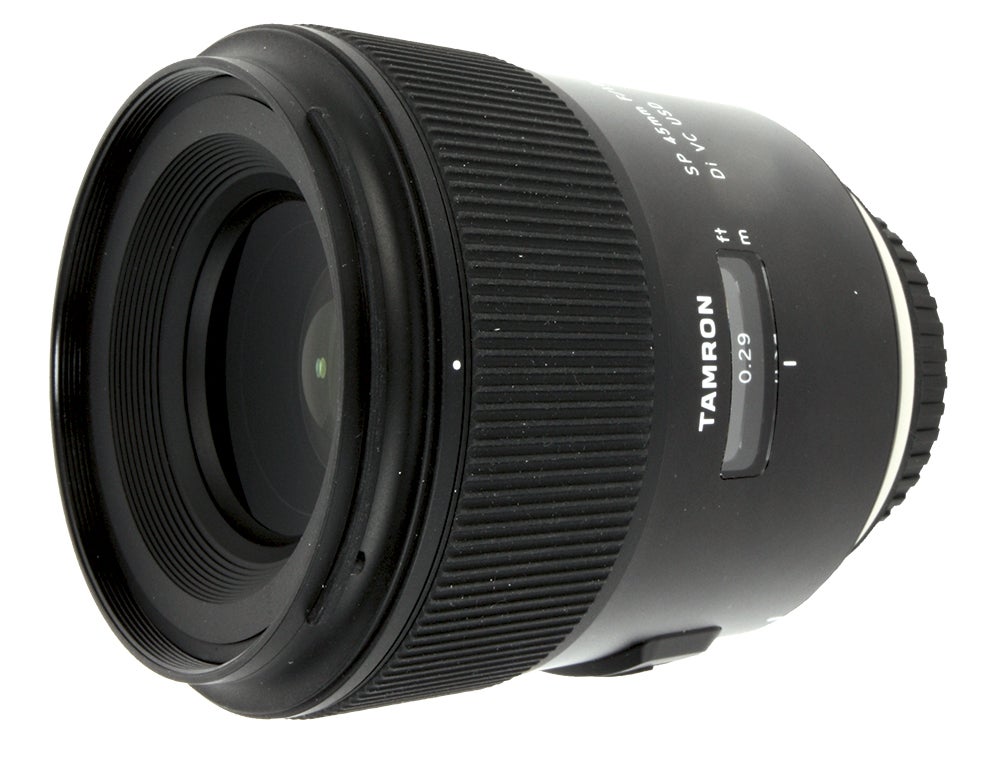Andy Westlake takes a look at what each of the main camera and lens makers has produced in the past year
It’s been another busy year in photography, with all the major manufacturers producing a range of new cameras and lenses. Indeed, at AP we’ve tested no fewer than 40 cameras and 36 lenses during the course of 2015, along with sundry printers, flash systems and a huge range of assorted accessories. This puts us in an unrivalled position to take a look back and pick out the trends and highlights of the year. Across the following pages we’ll look at what each manufacturer has been up to, and give our predictions for products we expect (or hope!) to see in 2016.
Canon
Canon has had a busy year, releasing a raft of new cameras and lenses
Key products
- EOS 5DS R
- EOS 760D
- EOS M3
- PowerShot G3 X
- PowerShot G5 X
- PowerShot G9 X
- EF 35mm f/1.4L II USM
- EF 50mm f/1.8 STM
- EF 11-24mm f/4L USM
Canon’s headline product was undoubtedly the 50.6MP EOS 5DS R, which is one of the finest DSLRs we’ve ever tested. Alongside its near twin, the EOS 5DS, it wrests back the ‘highest-resolution’ crown after years of domination by Nikon and Sony. Canon’s bread-and-butter products, though, are its consumer DSLRs, and this year the line has been split into two. We much prefer the EOS 760D to the simpler EOS 750D.
Canon has also released three fine lenses for EOS users. The inexpensive EF 50mm f/1.8 STM is
a nicely judged update to an ageing film-era design, and at the other end of the scale the stunning EF 35mm f/1.4L II USM is a real improvement over its highly regarded predecessor. Meanwhile,
the impressive EF 11-24mm f/4L USM is the widest-angle rectilinear lens in the world.
In the mirrorless market, the EOS M3 is a clear advance over the firm’s previous efforts, and a much nicer camera for serious photographers. Canon’s biggest problem, though, is that it’s far behind the competition in terms of its native lens range and really needs to address this sooner rather than later.
Canon has also upgraded its line-up of enthusiast compacts with 1in sensors for improved image quality. However, its efforts have been a bit hit and miss; the G3 X superzoom is a rare misjudgement, let down by the lack of a built-in viewfinder. Meanwhile, the PowerShot G5 X is exactly what the G3 X should have been in terms of design (indeed, it’s one of the nicest compacts on the market to use), while the G9 X is stylish and petite.
Next year?
With the Olympics in the summer, Canon will surely bring out an update to its EOS-1D X pro sports camera shortly. Chances are that we’ll also get an EOS 5D Mark IV, and perhaps a replacement for the EOS 6D. I’d also love to see a true enthusiast-oriented CSC and a revised G3 X, both with built-in electronic viewfinders, but I’m not holding my breath.
Fujifilm
Development of Fujifilm’s X system continues apace
Key products
- X-T10
- XF 16mm f/1.4 R WR
- XF 16-55mm f/2.8 R LM WR
- XF 90mm f/2R LM WR
- XF 35mm f/2R WR
Fujifilm started the year with a couple of minor updates, in the shape of the XQ2 enthusiast compact and the X-A2 CSC. But this turned out to be merely a warm-up for the X-T10 – a really nice little camera that puts most of the best bits of last-year’s X-T1 into a more affordable package.
The Fujinon lens range has grown too. The XF 16-55mm f/2.8 R LM WR is a fast standard zoom with absolutely stunning optics, while the XF 90mm f/2R LM WR and XF 16mm f/1.4R WR are excellent portrait and fast wide primes respectively. But for most users, the latest XF 35mm f/2R WR is the most interesting of all, being an attractive weather-resistant lens at a very good price.
Next year?
Fujifilm’s roadmap shows two exciting-looking lenses coming up – a 100-400mm telezoom and a 120mm f/2.8 Macro. But hopefully we’ll also see a few affordable primes of the same ilk as the 35mm f/2; I’d love to see a 16mm f/2.8 and a 70mm f/2.5. It’s also surely time for an update to the X-Pro1 CSC and we’re looking forward to seeing what Fujifilm can add to its flagship camera.
Leica
There’s only one rule with Leica – expect the unexpected
Key products
- Leica Q (Typ 116)
- Leica SL (Typ 601)
- Leica M Monochrom (Typ 246)
- Leica M (Typ 262)
- Leica S (Typ 007)
If I were to choose one word to describe Leica’s year, it would be ‘idiosyncratic’. The company announced an array of very different cameras, all of which are as individual as they are expensive.
Leica’s core business lies in its M-system rangefinders, and this year it has made two new models aimed at different types of purist photographer. The M Monochrom (Typ 246) is a unique black & white-only camera that’s capable of shooting lovely images, while the M (Typ 262) has an ultra-quiet shutter and eschews offering either live view or video recording.
For the professional photographer, there’s the medium-format Leica S (Typ 007) DSLR and the Leica SL (Typ 601) full-frame CSC, which are based around a similar minimalist control layout with only a few buttons and dials. They’re impressive cameras, but distinctly unintuitive to use.
Easily our favourite, though, is the Leica Q (Typ 116) full-frame compact. Indeed, with its astonishing electronic viewfinder and traditional controls, it may well be the most desirable fixed-lens camera on the planet. Sadly, at £2,900, it is well beyond the reach of most photographers.
Next year?
Second-guessing Leica is impossible, so it’s barely worth trying. Like many others, though, I’d love to see an interchangeable-lens version of the Q, using either the rangefinder M-mount or the electronic SL mount. Or maybe a Q Monochrom; now that would be interesting indeed.
Panasonic
A clear focus on 4K video is only part of Panasonic’s story
 Key products
Key products
- Lumix DMC-T270
- Lumix DMC-GX8
- Lumix DMC-G7
- Lumix G 25mm f/1.7 Asph
- Lumix G 42.5mm f/1.7 Asph OIS
Two themes have emerged from Panasonic in 2015. First is a focus on including 4K video in all but the least expensive of its cameras, along with its unique 4K Photo mode for capturing 8MP stills. Second is a move towards including higher-resolution electronic viewfinders in many of its cameras, such as the Lumix DMC-TZ70 pocket travel zoom and the Lumix DMC-FZ300 bridge camera.
Micro Four Thirds, though, is at the core of the firm’s ambitions. Both the Lumix DMC-GF7 and G7 are capable within their own sectors, but it’s the DMC-GX8 that really caught our attention. With both in-body image stabilisation and 4K recording, it’s a great option for photographers who are also interested in shooting high-quality video.
Panasonic has also been quietly building up a line of small, relatively inexpensive primes. At £159 the Lumix G 25mm f/1.7 Asph is especially good value, while the Lumix G 42.5mm f/1.7 Asph OIS includes optical stabilisation.
Next year?
Panasonic is planning on moving to 8K video, and I wouldn’t bet against it arriving in a GH5 next year. An updated version of the FZ1000 superzoom also seems likely. A more left-field possibility might be a premium ‘travel zoom’ pocket compact combininga 1in sensor with an extended zoom range.
Olympus
Attractive new models have been added to the OM-D line
 Key products
Key products
- Tough TG-4
- OM-D E-M5 II
- OM-D E-M10 II
- M.Zuiko Digital ED 7-14mm f/2.8 Pro
- M.Zuiko Digital ED 8mm f/1.8 Pro fisheye
Olympus’s attention this year has been mostly on the Micro Four Thirds system, and in particular its OM-D range. Both the E-M5 II and E-M10 II are attractive updates that add interesting new features and improved controls while playing further with the retro styling that’s the hallmark of the line.
That’s not to say compact cameras haven’t got a look in. We’ve long been fans of the Tough series, and this year Olympus elevated it further by adding raw-format recording to the TG-4. This makes it the best underwater compact yet for enthusiast photographers.
Naturally, a few new lenses have shown up too, the most interesting being the Pro line M.Zuiko Digital ED 7-14mm f/2.8. It’s perhaps not quite as stellar optically as the existing 12-40mm and 40-150mm f/2.8 zooms, but it’s still very good and the three together make a really strong line-up. For more specialist uses, there’s also an M.Zuiko Digital ED 8mm f/1.8 billed as the world’s fastest fisheye.
Next year?
It can’t be long before Olympus ventures into large-sensor compacts and I wouldn’t be surprised to see it adopt the Four Thirds format to stand out from the 1in crowd. I’d love to see a larger sensor in the Tough line, too, but that’s probably over-optimistic. Finally, an OM-D E-M1 II will surely show up some time in 2016.
Nikon
This year Nikon has focused on lenses, along with a couple of DSLRs
Key products
- D7200
- D5500
- 1 J5
- AF-S Nikkor 24-70mm f/2.8E ED VR
- AF-S Nikkor 24mm f/1.8G ED
- AF-S Nikkor DX 16-80mm f/2.8-4E ED VR
On the face of it, Nikon has had an oddly quiet year. It started off with the D5500 DSLR, which brings little new in terms of specification but has a sculpted monocoque design that makes it really nice to use. In comparison, the D7200 is a minor update to the D7100 that adds a few useful new features, but mostly demonstrates how little can realistically be added to today’s already fully featured DSLRs. Meanwhile, the 1 J5 compact system camera has the nicest design we’ve seen in this series so far, but is still frustratingly simplistic to shoot with.
Most of the company’s activity has been in lenses, with new premium zooms for both DX and FX-format DSLRs. Both the AF-S Nikkor DX 16-80mm f/2.8-4E ED VR and AF-S Nikkor 24-70mm f/2.8E ED VR are big, chunky optics that feature optical stabilisation. In the run-up to next year’s Olympics, though, much of the company’s focus has been on long telephotos, with new 500mm and 600mm f/4 primes joined by an interesting 200-500mm f/5.6 zoom, and the remarkably small AF-S Nikkor 300mm f/4E PF VR that’s based on Phase Fresnel lens technology.
Next year?
Nikon has already announced that it’s developing a new professional DSLR, the D5, and a refresh of the entry-level D3300 is a certainty. However, its relative inactivity in 2015 could hint at something big on the horizon. Might we see a new full-frame CSC, perhaps?
Ricoh & Pentax
Ricoh is gearing up for the launch of its full-frame Pentax DSLR
Key products
- Ricoh GR II
- Pentax K-S2
- Pentax K-3 II
- HD Pentax-D FA 24-70mm f/2.8 ED SDM WR
- HD Pentax-D FA* 70-200mm f/2.8 ED DC AW
Following its integration of Pentax, Ricoh now makes very few cameras under its own brand. However, it refreshed its APS-C enthusiast compact with the GR II – a nice little camera that adds built-in Wi-Fi and a smattering of other features to keep it up to date.
The long-promised Pentax full-frame DSLR may have been delayed again, but the mid-range K-S2 and enthusiast K-3 II keep the brand going in the meantime. Both are interesting alternatives to Canon and Nikon, with impressive feature sets including in-body image stabilisation at very attractive prices.
On the lens front, activity has focused on assembling a workable lens range for full frame, with 70-200mm f/2.8, 150-450mm f/4.5-5.6 and 24-70mm f/2.8 zooms all appearing during 2015. While the first two are original designs, the latter bears a very strong resemblance to Tamron’s highly regarded 24-70mm f/2.8, with the same optical formula.
Next year?
That Pentax full-frame DSLR is now promised for the start of 2016 – expect an announcement in time for the CP+ trade show in Japan in February. Pentax’s lens roadmap suggests that it will be accompanied by a standard zoom, perhaps a 24-105mm f/4, and a rebadged version of the Tamron 15-30mm f/2.8 fast wideangle zoom. More full-frame lenses will surely follow.
Samsung
Samsung has withdrawn from selling cameras in the UK
Key product
- NX500
At the end of last year, Samsung seemed to be on a roll, with the hugely accomplished NX1 premium CSC accompanied by a couple of very impressive fast-zoom lenses. But during the course of 2015 it released just one new camera, the rather nice little NX500, and no lenses at all.
At the end of November we learned that Samsung has decided to stop marketing and selling cameras in the UK – a move that appears to be reflected across the rest of Europe. It’s sad news for anyone invested in the NX system, which Samsung only launched in 2009.
Sigma
Sigma has expanded its Art line of high-quality lenses
 Key products
Key products
- dp0 Quattro
- 20mm f/1.4 DG HSM Art
- 24-35mm f/2 DG HSM Art
- 24mm f/1.4 DG HSM Art
Sigma has continued its transformation from a supplier of inexpensive alternatives to camera-makers’ zoom lenses, to a company that makes truly superb optics at a still-competitive price. This year has seen it add three full-frame DSLR lenses to its Art line-up, all of which we rated extremely highly. These include the world’s first f/2 full-frame zoom – the 24-35mm f/2 DG HSM Art – and the world’s fastest 20mm prime, the 20mm f/1.4 DG HSM Art. Along with the 24mm f/1.4 DG HSM Art, these are no longer cut-price alternatives to Canon or Nikon, but instead are premium options in their own right. Meanwhile, the dp0 Quattro compact has a superb fixed 21mm equivalent wideangle lens.
Next year?
A number of Sigma’s lenses are starting to look long in the tooth, and I expect to see the company revisiting its fast zooms for full frame, but with faster apertures or extended zoom ranges instead of like-for-like replacements. It’s also about time for Sigma to start making native lenses for the Sony Alpha 7 series, but maybe it will wait until more rival full-frame CSC systems start to appear.
Sony
Sony has made a strong push to full frame in 2015
Key products
- Cyber-shot RX1R II
- Cyber-shot RX100 IV
- Cyber-shot RX10 II
- Cyber-shot HX90V
- Alpha 7R II
- Alpha 7S II
- T* FE 35mm f/1.4 ZA
- FE 90mm f/2.8 Macro G OSS
From Sony’s activity this year, it seems to have decided that its future lies mainly along two strands: the RX line of enthusiast compacts, and the Alpha 7-series full-frame CSCs. Its key advances come on the back of two outstanding new image sensors – the 20MP ‘stacked CMOS’ in the Cyber-shot DSC-RX100 IV and the RX10 II, and the 42MP full-frame BSI CMOS in the Alpha 7R II and Cyber-shot DSC-RX1R II.
The new 1in sensor is built for speed, and allows both ultra-fast shooting and high frame-rate video recording – the latter allowing slow-motion footage to be recorded. This fits especially well with the RX10 II bridge camera, although it’s perhaps less useful in the RX100 IV, with its much shorter lens. Sony’s other interesting zoom compact is the Cyber-shot DSC-HX90V – a cute, pocket-sized ‘travel zoom’ that borrows heavily from the RX100 design, including its pop-up viewfinder.
Meanwhile, the Alpha 7R II is the most exciting camera of 2015, with its new sensor providing an impressive combination of resolution, high ISO image quality and sophisticated autofocus. The same sensor has found its way into the Cyber-shot DSC-RX1R II premium compact, bringing equally stunning image quality. If there were any doubt over how serious a threat Sony has become to Canon and Nikon, these cameras should dispel it.
Sony has also been developing its FE lens line-up, most notably with the lovely Distagon T* FE 35mm f/1.4 ZA and the stunning FE 90mm f/2.8 Macro G OSS. In contrast, there’s been relatively little to cheer for Alpha-mount users, and no new APS-C E-mount cameras or lenses at all.
Next year?
Expect to see more FE full-frame lenses, as Sony pushes to build up the system that’s captured the imagination of so many photographers. Updates to the Alpha 5100 and Alpha 6000 APS-C CSCs look due, but that doesn’t necessarily mean they’ll appear, as both are still towards the top of their class. About the only near certainty is the annual RX100 update in May or June.
Third-party lenses
Samyang
The Korean lens maker has expanded its line-up
Key products
- 21mm f/1.4
- 50mm f/1.2
- 100mm f/2.8 Macro
- 135mm f/2
Korean lens maker Samyang has traditionally focused on manual-focus DSLR lenses, with 135mm f/2 and 100mm f/2.8 macro lenses arriving this year. But such lenses usually work better on compact system cameras, so if anything we’re more excited by its 21mm f/1.4 and 50mm f/1.2 fast primes for APS-C mirrorless models. Next year, I’d expect to see more along these lines, and perhaps some full-frame lenses purpose-designed for the Alpha 7 system.
Tamron
Fast image-stabilised primes add a new string to Tamron’s bow
Key products
- SP 35mm f/1.8 Di VC USD
- SP 45mm f/1.8 Di VC USD
For a while, Tamron struggled to keep up with the innovation of its great rival Sigma, but it has now found its own direction. Like Sigma, it aimed upmarket and created some unique lenses. After last year’s excellent 15-30mm f/2.8 Di VC USD wide zoom, the company ventured into a new line of primes that combine a decently fast f/1.8 aperture with optical image stabilisation. In doing so, it aims to give the best of both worlds for low-light shooting, and we like the idea (and both lenses) a lot.
Next year?
It seems a given that Tamron will expand its range of SP f/1.8 primes with more focal lengths. Based on the company’s wish to serve both APS-C and full-frame users, 28mm and 85mm lenses might be the
logical next additions.
Zeiss
It’s been a busy year for a resurgent Zeiss
Key products
- Batis 25mm f/2
- Batis 85mm f/1.8
- Loxia 21mm f/2.8
- Milvus 50mm f/1.4
- Milvus 85mm f/1.4
Zeiss is one of the oldest brands in photography and this year has significantly expanded its line-up of high-quality optics. Its new Batis range is the first third-party autofocus alternative for Sony Alpha 7 owners, and both the Batis 25mm f/2 and 85mm f/1.8 are absolutely superb. Zeiss also launched a modernised Milvus line of manual-focus lenses for full-frame DSLRs, with brand-new optical designs giving both the Milvus 50mm f/1.4 and Milvus 85mm f/1.4 truly stunning sharpness – if you can focus them accurately. Finally, the Loxia 21mm f/2.8 is a compact wideangle prime for the Sony Alpha 7 range that’s manual-focus only.
A new 28mm f/1.4 is already promised in the company’s premium Otus line to go on sale in 2016, and more Batis and Loxia lenses for the Alpha 7 are surely on their way.
The rest
Outside of the main manufacturers, some interesting ideas have emerged. The DxO One is the French company’s first foray into hardware, and is a small camera module that plugs into an iPhone via a rotating Lightning connector. It’s a really interesting idea, and while it seemed promising but unfinished when we reviewed it in AP (26 September), since then it has been improved by a major firmware upgrade and a series of camera app updates.
Another intriguing product is the DJI Osmo, which is essentially the camera module and stabilising gimbal mount from the Phantom 3 drone attached to a grip for hand-held shooting. It’s primarily a video camera, but the set-up could have applications for shooting long-exposure stills handheld.





